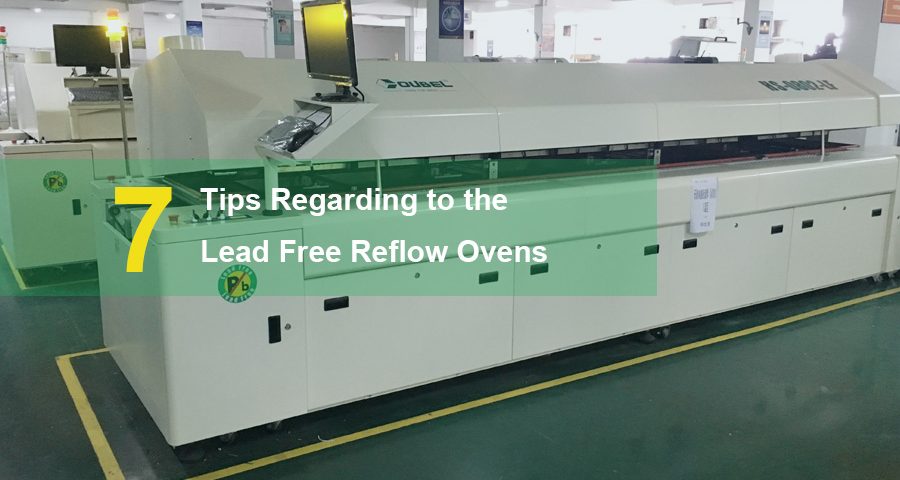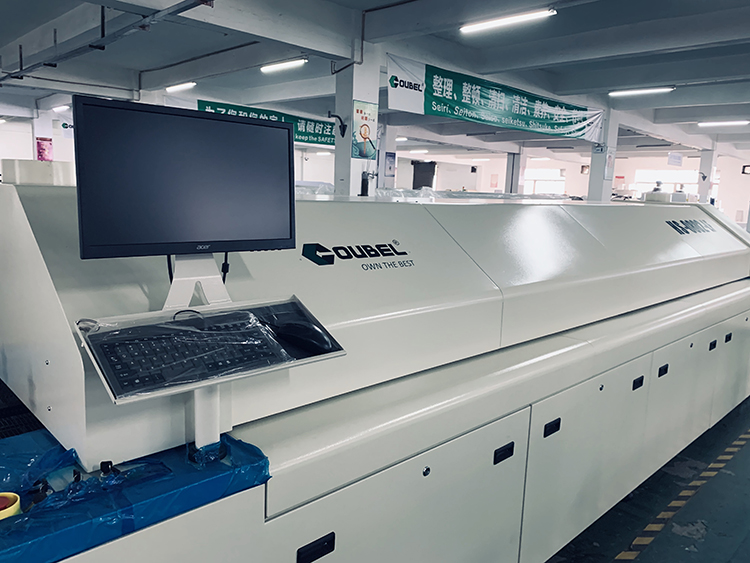- Welcome to OUBEL !
- +86 755 2954 6287
- sales@obsmt.com
7 Tips Regarding to the Lead Free Reflow Ovens

High Speed industrial mixer
May 6, 2015
How to split the cellphone screen?
March 8, 2016With the development of the electronics industry, the lead-free technology (lead-free reflow soldering) becomes more and more popular among users. However, in the global market there are so many brands of lead free reflow oven, finally we find it’s not easy for us to make a decision on a good performance reflow oven with the affordable price. Don’t worry! Now Here 7 tips are special for you!
Tips 1:Temperature-control precision
The lead-free reflow soldering process is basically decided by the highest temperature-withstanding of solder material and the electronic components on the PCB board. For example, the reflow peak temperature of Lead-free SAC solder paste is 235’C to 245’C,which is very close to the limit temperature of many components (250 degree to 260 degree ),even higher than some components , resulting in the safe temperature distance between the solder paste and components is only around 10 degree. By this token, the temperature control precision is very important to avoid the phenomenon that temperature slightly offsetting will likely lead to the damage of some important components. As most applications experience proved,
the ideal temperature-control precision should at least reach +/- 1 degree . Two facts that impact the temperature-control precision: 1). Heater element; 2). Heat transfer.
Tips 2:Thermal compensation
Thermal compensation was usually defined as the heat compensation happened inside the furnace during the continuous production process .The timely thermal compensation will directly affect the reflow soldering results in the production process, when the first piece of PCB board goes through, the furnace temperature can reach the requirement, but the second block, third block. the temperature is changing because of the heat acquired by the PCB plate in front. If the thermal compensation did not keep up, it will naturally affect the soldering’s effect.
Thermal compensation ability is the ability to reflect reflow soldering production. If you used the high efficient reflow oven , the temperature-alarm can be set small and small no matter how much the PCB boards in the oven and how much the thickness of PCB fixture , you will see the temperature fluctuations are small . But if you used the poor reflow oven, you’d better set a higher temperature alarm. However, some low-end brand of reflow oven ordinarily sets the temperature alarm at 5 degree to 10 degree,which lead in making users suffer from regularly alarming to stop the continued production .
Tips 3: Temperature uniformity
The different sizes of PCB components determine their respective different heat absorption, obviously, the temperature in each area is different. As the facts dedicated, the temperature difference will directly influence the soldering effect, the smaller the temperature difference, the better the performance, especially when various components on the same PCB board go through the furnace. Ordinarily,Uniformity is the first condition of production, which mainly reflected in the temperature curve of the PEAK point. For example,
if the temperature-difference of PEAK point is bigger than 5 degree,obtaining the production temperature-curve will become more trouble, even it would be impossible to measure a suitable production temperature curve.
Tips 4:Performance of anti-channeling temperature
Anti-channeling temperature mainly considers the temperature in the region between the upper and lower as well as around the neighborhood. Observing whether a reflow oven is channeling temperature, you can also detect temperature curve by a thermometer test at any point of the PCB, the greater the uphill slope of temperature curve measured between the adjacent zones, the better the performance of anti-channeling temperature. Reflow temperature channeling will bring the PCB boards with a huge heating impact, and easily make the release of PCB and copper thin, cause quality problems.
Tips 5:Flux collection system
If the flux failed to be adequately collected before cooling, there will be a part of the flux of gas returns to the workspace, and cause the PCB board and heating area is polluted. Usually, the high performance of reflow oven will be equipped with Flux exhaust & filtering system in each zone to keep the cleaning of each chamber and reduce the maintenance frequency.
Tips 6:Cooling slope
Many manufacturers claim that lead-free reflow should emphasize the cooling slope, the higher the better. In fact, that’s a kind of irresponsible statement. In the process of practical production, natural cooling slope generally less than – 3°C, which is less used because of most of electronic components cannot withstand so high cooling slope, and Tin could easily lead to rupture. Some manufacturers claim cooling slope can be used to achieve – 5 °C, even to – 6 °C, actually, it’s no significance. It’s suggested that the cooling slope is between -3°C and -5 °C .
Tips 7:The other facts
The other facts include the following such as the material of conveyor system, control system and the dimension of the main frame. If the material of conveyor system deals with poor mechanical properties, it will impact the PCB board conveying stable. How do you think of the bad conveying performance?Actually it is
a big trouble.The control system should be equipped with the word class electrical system such as Siemens, Schneider and so on,
all that seem like a strong man should have an energetic heart and brave brain.The dimension of the mainframe is also another important reason for the customers to make a decision.


